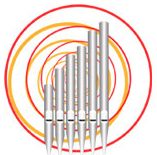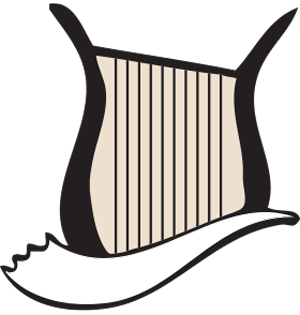Organ n. 42 | The Concert Organ at the Hecht Museum
Mr Reuven Hecht, who created in 1951 Haifa’s flour mill “Dagan”, was one of the most generous donators to the University of Haifa. The Hecht Foundation endowed the University with a large archeological museum which also contains a pictures collection coming from Mr Hecht private art collection. R. Hecht who loved classical music had a “coin-concerts”arranged in the interior of the museum especially suited to chamber music. could be reached separately
One year before his death in 1993, R. Hecht decided to install an organ there and entrusted the construction to the Israeli organ-builder Gideon Shamir. Mr Shamir pointed out to him that an organ of the envisioned size should be established in a special hall, where the acoustics would allow the instrument to be heard in the best possible way, and with the possible inclusion of orchestra , soloists and choir. R. Hecht decided to have a concert hall constructed next to the museum. The new hall seats about 400 and it is being used by the University of Haifa also as a lecture and a ceremony hall. The organ was inaugurated in October 1998 by a concert given by the organist Roman Krasnovsky. The organ is placed on the platform of the Auditorium on the left side. The oak-case is in a neo-gothic style. The case is made in part from the of the older organ of the Lutheran Church of the Savior in Jerusalem (the newer one was built by Schuke). This instrument was made by the German organ-builder Dinse of Berlin. It forms, above a row of closed panels, a great colonnade of six arches supporting a balcony of twelve arches. The upper part of the organ is not closed. The instrument is actually made of two older organs : the Great keyboard pipes rest on a chest made in 1904 by the British organ-builder Bevington of London which was part of the old organ at the Anglican Cathedral of Saint George in Jerusalem. (Later, the new Rieger organ was installed at the Cathedral). Almost all the pipes of the Great division are also coming from there, except the Bourdon 16′, the Mixture (of recent Dutch origin) and the Trumpet 8′, of old Italian origin. The second keyboard pipes rest on an even older Italian soundboard , remarkably conserved, made by Yacobbo Bazzani & Fillio from Venezia, dating 1868. This organ was originally built for the Church of the Holy Sepulcher in Jerusalem. G. Shamir wanted to conserve all the character of this keyboard and bought most of this division pipes from the Italian maker Rufatti who made them to the measurements of the original organ constructed by Bazzani. The Great is enclosed in its own box. The console was originally placed perpendicularly to the organ so the public could see the organist profile and feet-play. This design led to mechanical problems due to this unusual angle. Today the console is parallel to the organ .This organ was one of the three instruments (together with the organ of the Tel-Aviv University and the organ of Brigham Young University in Jerusalem) which hosted the First International Organ Festival in 2003.


